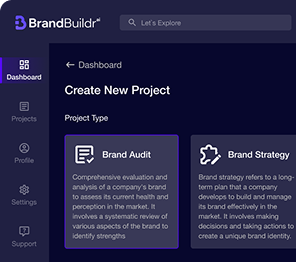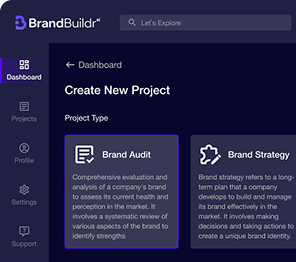Digital transformation has become a strategic imperative for modern enterprises across all industries. The rapid advancement of digital technologies is reshaping business models, processes, customer experiences, and the competitive landscape. Companies that embrace digital transformation gain a significant competitive advantage, while those that fail to evolve risk becoming obsolete.
In this article, we will explore the key strategies for digital transformation in modern enterprises, highlighting the importance of embracing change, leveraging emerging technologies, and aligning digital initiatives with business goals.
%20(1)%20(1).avif)
1. Understanding Digital Transformation
Digital transformation refers to the process of integrating digital technologies into all areas of a business, resulting in fundamental changes to how the organization operates and delivers value to its customers. It goes beyond merely adopting new technologies; it requires a cultural shift where innovation, agility, and customer-centricity become the foundation of the organization.
Digital transformation impacts various aspects of a business, including:
- Business Processes: Automating manual processes, streamlining workflows, and optimizing operations through data-driven decision-making.
- Customer Experience: Enhancing customer interactions, improving personalization, and delivering seamless digital experiences.
- Business Models: Developing new revenue streams, transforming existing products or services, and exploring disruptive innovations.
To succeed in digital transformation, businesses must develop a comprehensive strategy that aligns with their objectives and addresses the specific challenges and opportunities they face in the digital age.
2. Key Strategies for Digital Transformation
a. Developing a Clear Vision and Strategy
The foundation of any successful digital transformation initiative is a clear vision and strategy. Enterprises must define their long-term digital goals, identify areas of opportunity, and establish a roadmap for achieving these goals.
- Assess Current Capabilities: Evaluate the organization's existing technology infrastructure, data capabilities, and digital maturity to identify gaps and areas for improvement.
- Set Clear Objectives: Define measurable goals, such as improving operational efficiency, enhancing customer satisfaction, or expanding into new markets.
- Align with Business Goals: Ensure that the digital transformation strategy aligns with the overall business strategy. This alignment helps prioritize initiatives that deliver tangible business outcomes.
By setting a clear direction for digital transformation, enterprises can ensure that all stakeholders are aligned and committed to achieving the desired outcomes.
b. Fostering a Culture of Innovation
Digital transformation is not just about technology; it’s about creating a culture of continuous innovation and experimentation. Modern enterprises need to foster an environment where employees are encouraged to think creatively, embrace change, and explore new ways of doing business.
- Encourage Collaboration: Break down organizational silos and encourage cross-functional collaboration between departments. This helps generate new ideas and promotes knowledge sharing.
- Empower Employees: Provide employees with the tools, resources, and autonomy to experiment with new technologies and approaches. Encourage a mindset of learning and adaptability.
- Reward Innovation: Recognize and reward employees who contribute innovative solutions and help drive digital initiatives forward.
A culture of innovation enables organizations to respond quickly to changes in the market and remain competitive in a fast-evolving digital landscape.
c. Leveraging Emerging Technologies
Emerging technologies such as artificial intelligence (AI), machine learning, the Internet of Things (IoT), blockchain, and cloud computing are the building blocks of digital transformation. These technologies enable enterprises to automate processes, gain insights from data, and deliver new products or services to customers.
- Artificial Intelligence (AI): AI can be used to automate repetitive tasks, enhance customer service through chatbots, and provide personalized recommendations to customers. In industries such as manufacturing, AI is being used to optimize supply chains and predict equipment maintenance needs.
- Cloud Computing: Cloud platforms offer scalable infrastructure, enabling enterprises to innovate faster and reduce operational costs. Cloud computing also enhances collaboration and allows businesses to adopt flexible working models.
- IoT: IoT devices collect real-time data from physical environments, enabling businesses to monitor and optimize operations in areas like manufacturing, logistics, and healthcare.
- Blockchain: Blockchain technology can enhance transparency, security, and traceability in industries such as finance, supply chain management, and healthcare.
Modern enterprises should assess which technologies align with their business objectives and experiment with pilot projects to determine their potential impact.
d. Data-Driven Decision-Making
Data is the fuel for digital transformation. Enterprises must harness the power of data to make informed decisions, predict market trends, and optimize business processes. A robust data strategy is essential for unlocking the full potential of digital transformation.
- Data Collection: Implement systems that collect and centralize data from various sources, such as customer interactions, operational processes, and external market trends.
- Data Analytics: Use advanced analytics and AI to extract insights from the data. This can include predictive analytics, customer behavior analysis, and real-time decision-making.
- Data Governance: Ensure that data is managed securely, ethically, and in compliance with regulations. Establish clear policies for data usage, storage, and sharing across the organization.
By embracing data-driven decision-making, enterprises can identify opportunities for growth, optimize resource allocation, and improve overall efficiency.
e. Enhancing Customer Experience
In the digital age, customer expectations are higher than ever before. Customers expect seamless, personalized, and engaging experiences across all digital touchpoints. Therefore, improving customer experience is a key driver of digital transformation.
- Omnichannel Experience: Provide a consistent and seamless experience across all channels, including websites, mobile apps, social media, and in-store interactions.
- Personalization: Use customer data to offer personalized recommendations, content, and services. AI-powered recommendation engines can help deliver tailored experiences based on individual preferences.
- Customer Feedback: Continuously gather customer feedback through surveys, social media, and real-time interactions. Use this feedback to improve products, services, and customer support.
Enterprises that prioritize customer experience in their digital transformation efforts are more likely to build brand loyalty and retain customers in an increasingly competitive market.
f. Adopting Agile Methodologies
Agile methodologies have become a cornerstone of successful digital transformation. Agile approaches prioritize flexibility, collaboration, and iterative development, allowing enterprises to respond quickly to changes in the market and deliver value to customers faster.
- Cross-Functional Teams: Break down traditional department-based structures and form cross-functional teams that work together on specific projects or initiatives.
- Iterative Development: Focus on delivering small, incremental improvements rather than large, monolithic projects. This allows businesses to test new ideas quickly and adjust based on real-time feedback.
- Continuous Improvement: Embrace a culture of continuous improvement, where teams regularly review and refine processes, products, and services.
Agile methodologies empower enterprises to remain adaptive in a rapidly changing digital environment and continuously innovate.

3. Overcoming Challenges in Digital Transformation
Digital transformation is not without its challenges. Many enterprises face barriers related to legacy systems, organizational resistance, and skills gaps. Overcoming these challenges requires a strategic approach and a commitment to change.
a. Legacy Systems and Integration
Many enterprises still rely on outdated legacy systems that are incompatible with modern digital technologies. These systems can slow down innovation and make it difficult to integrate new solutions.
To overcome this challenge, businesses should:
- Prioritize Modernization: Identify critical systems that need to be modernized or replaced with cloud-based solutions.
- Adopt API-Driven Integration: Use APIs (Application Programming Interfaces) to integrate legacy systems with modern applications, enabling data sharing and interoperability.
- Phased Approach: Take a phased approach to system upgrades, minimizing disruption to day-to-day operations.
b. Change Management
Organizational resistance to change is a common barrier to digital transformation. Employees may be hesitant to adopt new technologies or change established workflows.
To address this issue:
- Leadership Support: Ensure leadership is fully committed to the digital transformation strategy and communicates its importance to the organization.
- Employee Training: Invest in training programs that equip employees with the skills and knowledge needed to work with new digital tools and technologies.
- Clear Communication: Keep all stakeholders informed about digital transformation's goals, progress, and benefits to reduce resistance and increase buy-in.
c. Skills and Talent Gaps
The rapid pace of technological change has created a skills gap in many enterprises. Businesses often struggle to find employees with expertise in areas like AI, data analytics, and cybersecurity.
To overcome talent shortages:
- Upskilling: Invest in employee training and development programs to upskill the existing workforce.
- Collaboration with Educational Institutions: Partner with universities and technical schools to create talent pipelines and stay ahead of industry trends.
- Hiring Specialized Talent: In some cases, enterprises may need to hire specialized talent or work with external consultants to fill critical roles.
Digital transformation is not just about adopting new technologies—it's about rethinking business models, fostering innovation, and delivering value in the digital age.

Conclusion
Digital transformation is no longer optional for modern enterprises. It is a strategic imperative that enables businesses to stay competitive, deliver better customer experiences, and drive innovation. By developing a clear vision, fostering a culture of innovation, leveraging emerging technologies, and prioritizing customer experience, enterprises can successfully navigate the complexities of digital transformation. While challenges exist, the rewards of becoming a digitally mature organization are vast, offering new opportunities for growth, efficiency, and long-term success in the digital era.

FAQ
What is digital transformation in an enterprise context?
Digital transformation is the strategic adoption of digital technologies to modernize operations, improve customer experiences, and enable new business models. It goes beyond tools, requiring cultural and organizational change.
Why is digital transformation critical for modern enterprises?
Digital transformation helps enterprises remain competitive, agile, and customer-centric. It improves efficiency, supports data-driven decision-making, and allows organizations to respond faster to market changes.
What are the key pillars of a successful digital transformation strategy?
Key pillars include clear business objectives, strong leadership, customer-focused design, modern technology infrastructure, data and analytics, and a culture of continuous innovation.
Which technologies commonly drive enterprise digital transformation?
Technologies such as cloud computing, AI and machine learning, automation, data analytics, IoT, and cybersecurity solutions play a central role in transforming enterprise operations.
What challenges do enterprises face during digital transformation?
Common challenges include legacy systems, resistance to change, skills gaps, data silos, security concerns, and unclear ROI. Addressing these early improves transformation outcomes.
How can enterprises measure the success of digital transformation initiatives?
Success can be measured through KPIs such as operational efficiency, customer satisfaction, revenue growth, adoption rates, and time-to-market improvements. Continuous measurement ensures long-term value.
Heading 1
Heading 2
Heading 3
Heading 4
Heading 5
Heading 6
Lorem ipsum dolor sit amet, consectetur adipiscing elit, sed do eiusmod tempor incididunt ut labore et dolore magna aliqua. Ut enim ad minim veniam, quis nostrud exercitation ullamco laboris nisi ut aliquip ex ea commodo consequat. Duis aute irure dolor in reprehenderit in voluptate velit esse cillum dolore eu fugiat nulla pariatur.
Block quote
Ordered list
- Item 1
- Item 2
- Item 3
Unordered list
- Item A
- Item B
- Item C
Bold text
Emphasis
Superscript
Subscript





















.avif)



.avif)

.avif)


